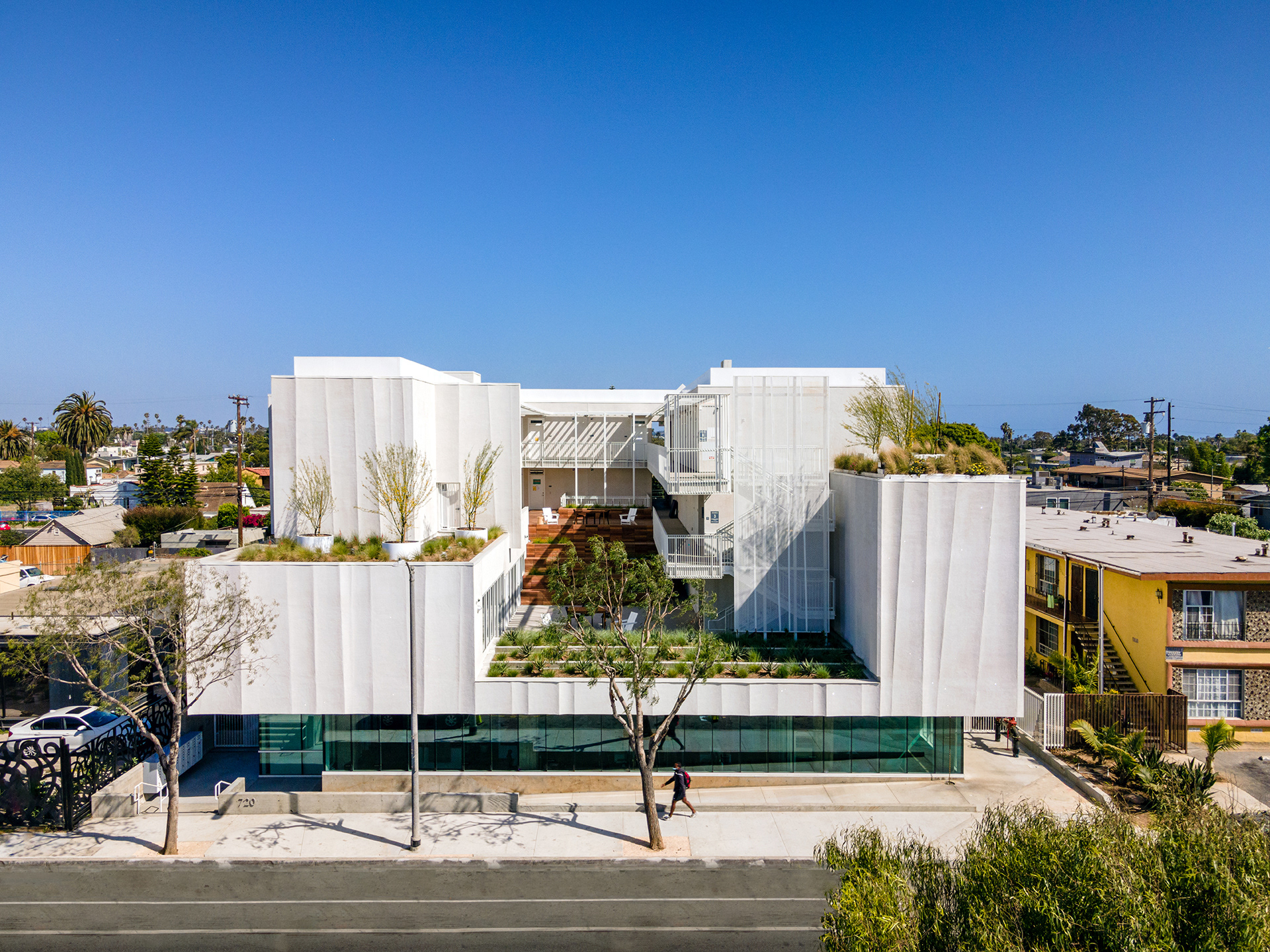
Awesome Building of the Month:
December 2024
Rose Apartments
La Vie en Rose!
By Frances Anderton for FORT: LA
Date: 2022
Address: 512 Rose Ave, Venice, CA 90291
Developer: Venice Community Housing
Architect: Brooks + Scarpa
Landscape Architect: Brooks + Scarpa with Tina Chee
Contractor: Walton Construction
Cost: $12.4 million
Dwelling Mix: 35, 100% affordable homes for formerly homeless seniors and young adults who have aged out of foster care.
Funding sources: City of LA (HHH), County No Place Like Home (NPLH), tax credits, and bonds
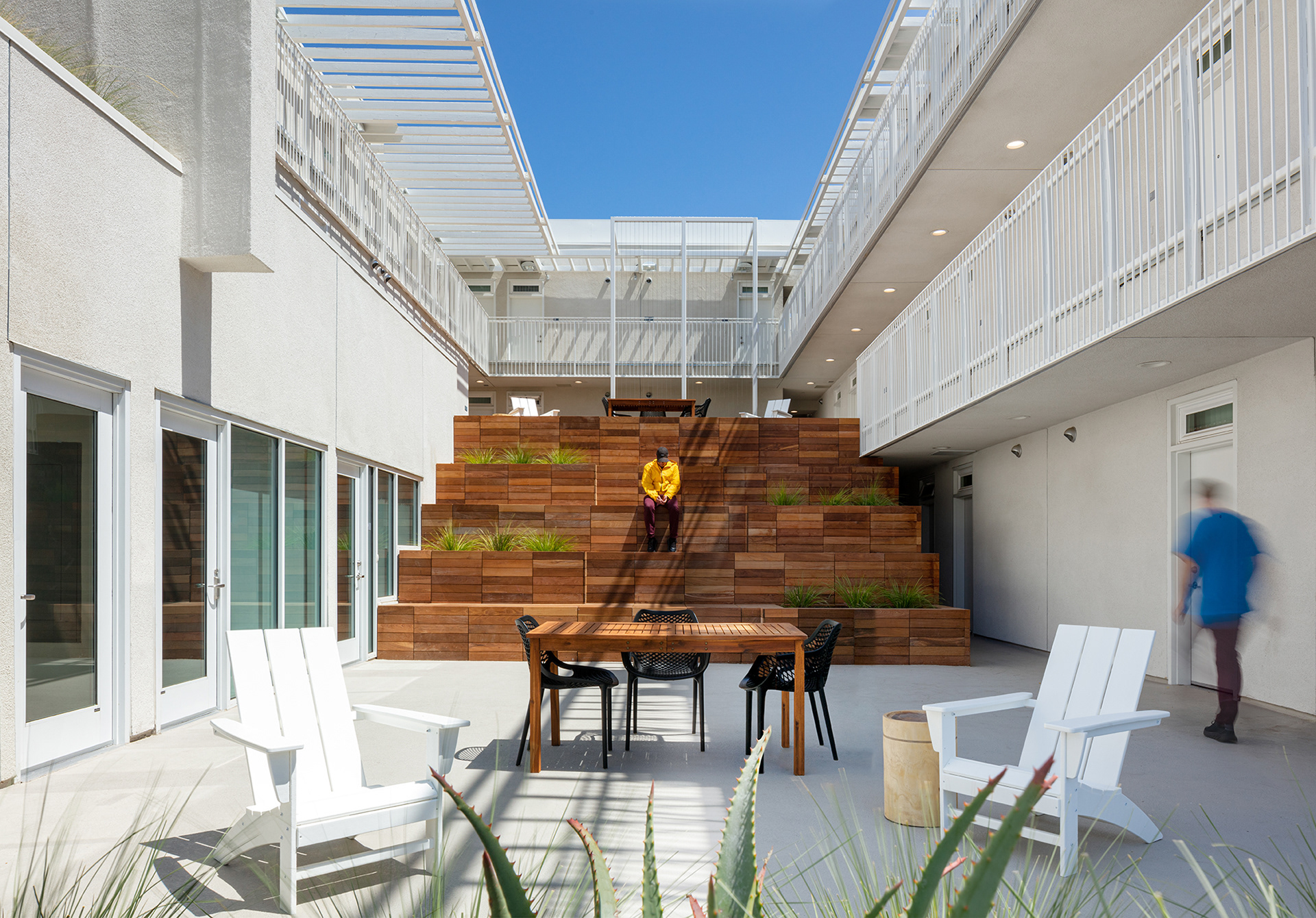
What is Rose Apartments?
Rose Apartments is a mixed-use, four-story, three-winged building containing 35 studios that are arranged around two raised courtyards, connected to each other by deep steps. This is home for people transitioning out of foster care or unhoused. On the ground level are the offices of the nonprofit developer that built and manages the apartments, Venice Community Housing (VCH). There are also rooms for staff providing the supportive services for the residents and some parking spots. The longtime nonprofit developer has always emphasized art and architecture in its family and permanent supportive housing complexes. Their architects Lawrence Scarpa and Angela Brooks (Brooks + Scarpa) found multiple thoughtful ways to elevate the experience of these homes, for both the residents and passersby, even adding a surface treatment that puts the building in the pink!
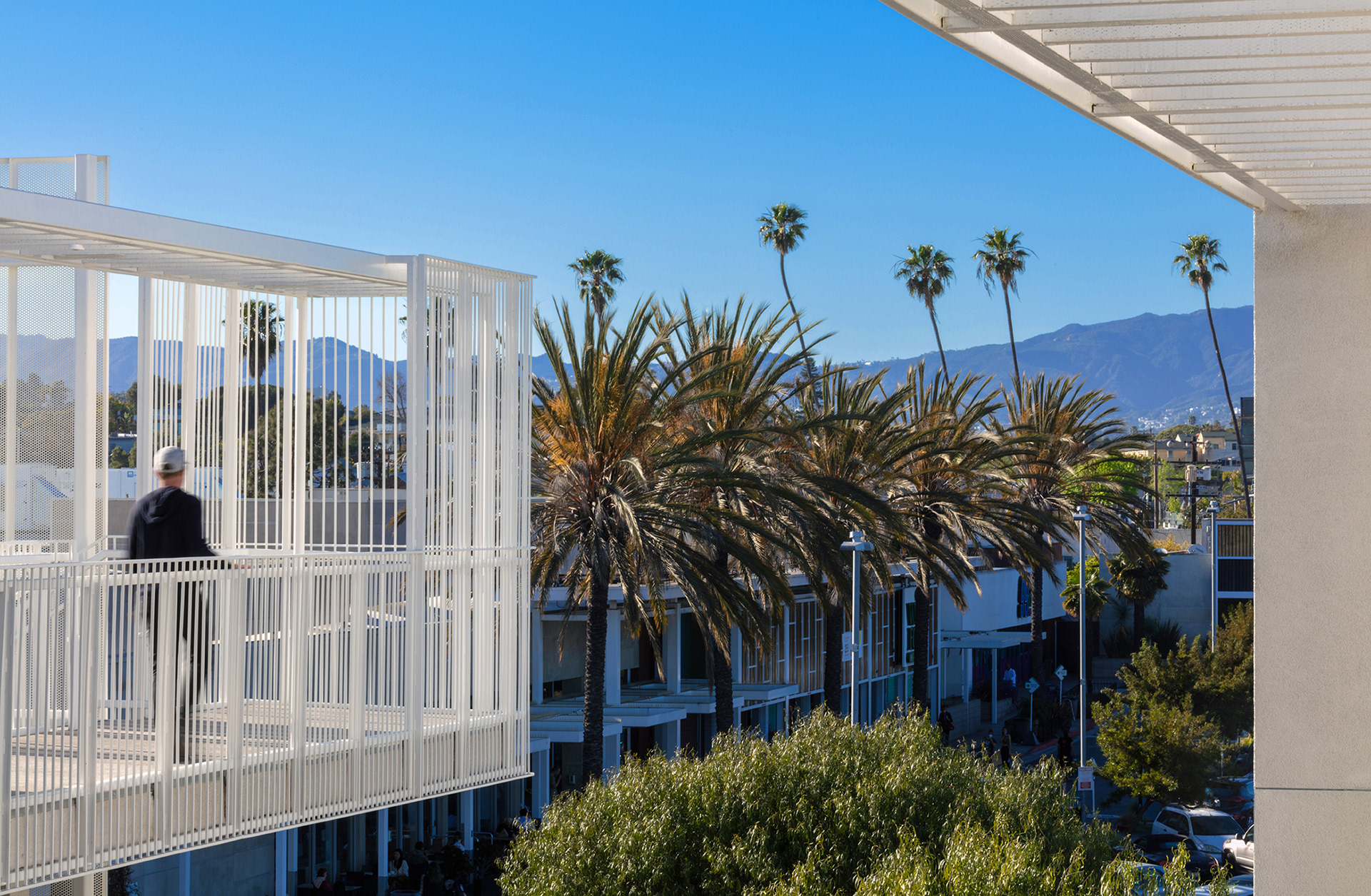
Tell us about the courtyards
Many of the buildings showcased in Awesome and Affordable have courtyards, which have a long pedigree in Southern California. They serve as social condensers, sources of natural light and air, and, in buildings with small units like Rose Apartments (each around 350 square feet), the shared open space also offsets the small size of the dwellings. This building offers a variation on that beloved typology: the courtyard is lifted up and set back from the street.
The architects have adopted this approach since designing The Six in Westlake, 2017, for people who were previously unhoused. On seeing proposed monumental stairs and a direct connection to the public sidewalk, a residents’ committee rejected the concept because they saw the street as dangerous. Instead they told the designers they wanted “a nurturing environment that was protected,” recalls Brooks. So the courtyards at Rose are open to the street while maintaining an elevated distance from it. In an added bonus, the stepped courts offer a lofty and truly spectacular view, across the Whole Foods parking lot and yonder to the Santa Monica Mountains.
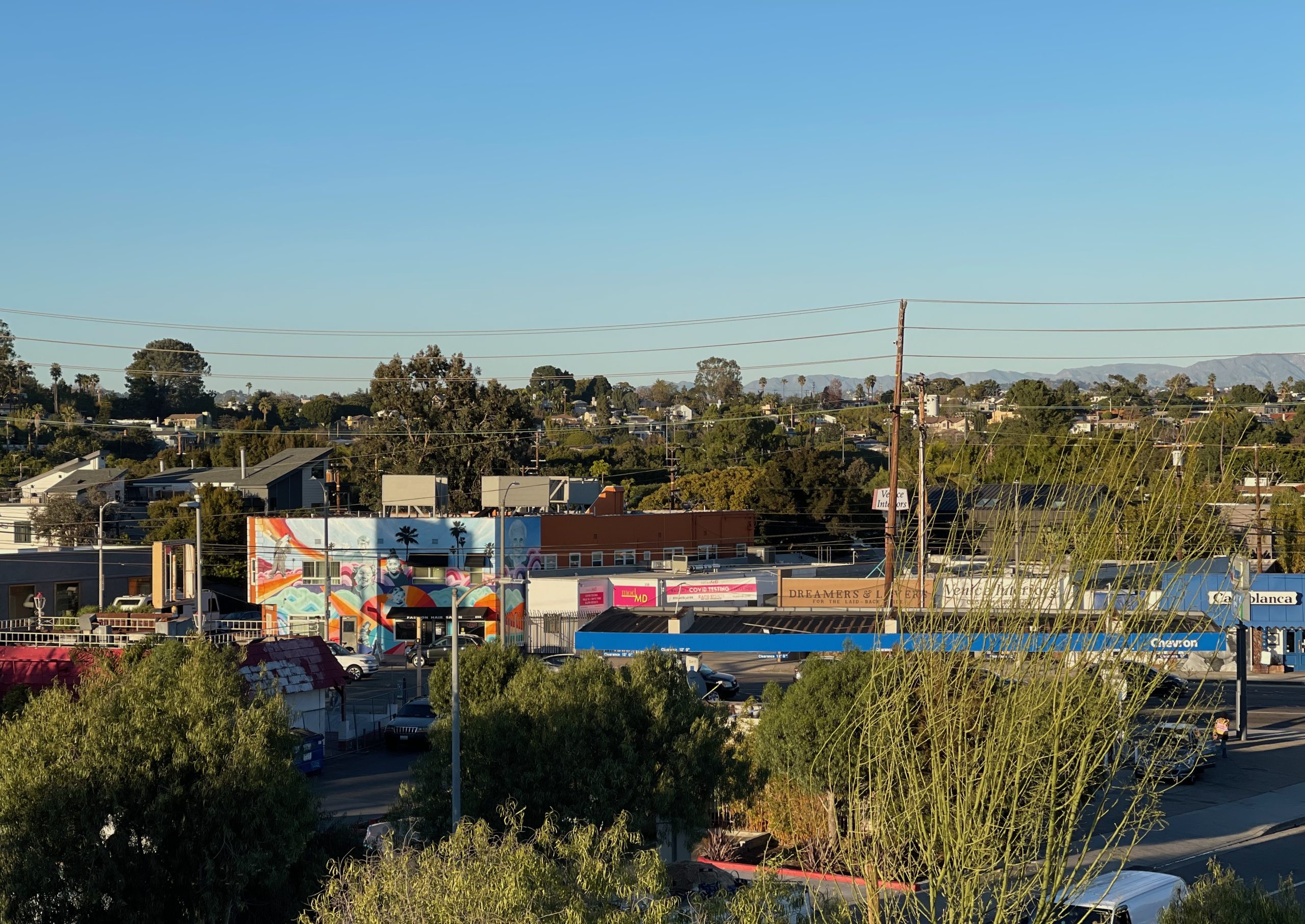
The glitter makes it gold
At Rose Apartments the developer and architects softened what might have been a stark building with landscaping and some relatively inexpensive zhuzh. The stucco on the street facing facade is scalloped and sprinkled with glitter. The owners initially resisted this move on cost grounds but the architects held their ground (though they had hoped all the facades could be treated this way) and this glitter stucco effect, which continues an LA tradition of applying decoration on stick and stucco boxes, has paid off in prestige for the project. As the sun moves across the building it morphs from green-white to, near sundown, a warm gold-pink. It’s the delightful detail that gets noticed. Rose Apartments looms like a proscenium stage, and the glam walls bring to mind curtains, opened for passersby to enjoy the spectacle.
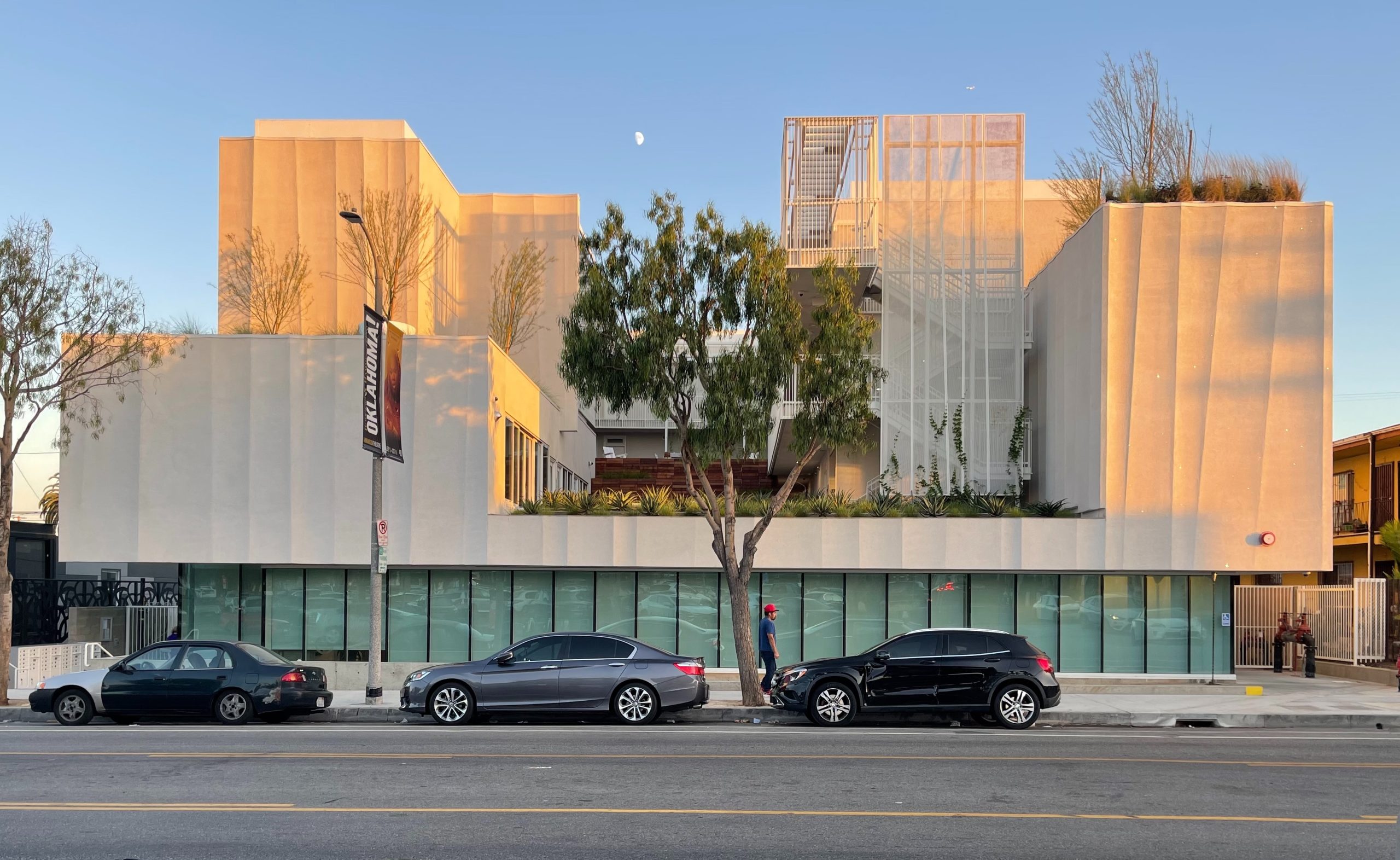
What about the other awesome details?
The building indisputably has presence. It is muscular and bold, with a cubist feel reinforced by the vertical windows with projecting shades; high, cantilevered terraces with prospects over the area; and chunky steps-come-seating that connect and separate the two courtyards.
The designers also found multiple ways to transform negatives into positives. Local building codes demand enclosed staircases, but Brooks+Scarpa fought to keep them open, adding a flow of space, views and light throughout the structure. The building has to be highly secured due to its vulnerable population. Yet, rather than visibly surround the building in high railings, the designers created soft barriers in places, with plants. “If you make the planting wide enough, you don’t actually need a railing so when you stand on the courtyard, you’re looking out like you’re on the bow of a ship,” explained Lawrence Scarpa in an interview for the publication Of The Moment. “And people can see in and vice versa,” adds Angela Brooks.
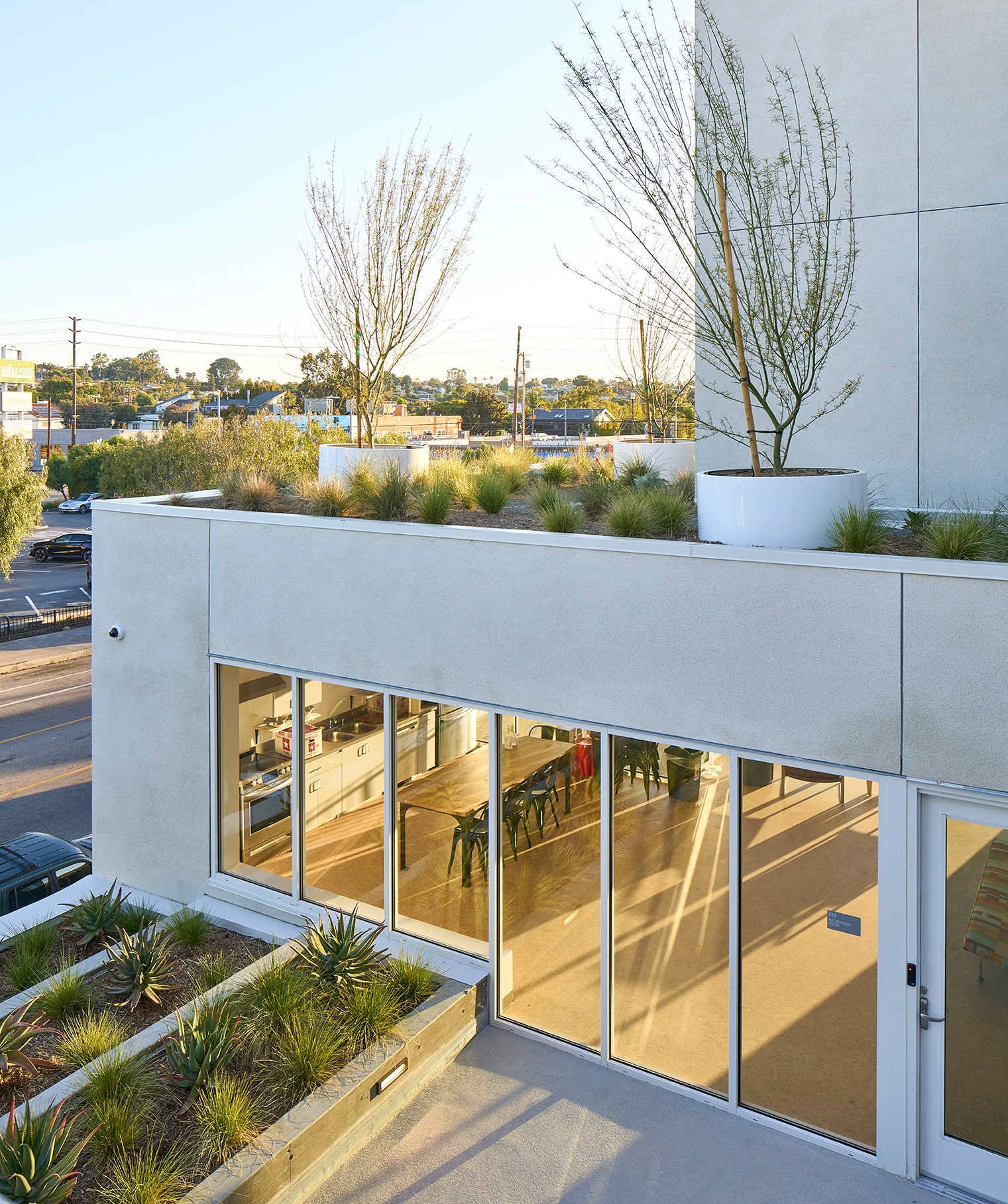
Was it welcomed?
Not by all. Even though Rose Apartments is a mere four stories, people in the nearby residential streets resisted it partly on grounds of size. This project took seven years and around 50 public meetings to be approved. As a result of the challenges surrounding housing production in Los Angeles, Brooks has become increasingly engaged with politics and policy, while at the same time holding her ground on design details she believes in. After much push and pull Rose Apartments was eventually able to change hearts and minds. Brooks recalls an encounter following the opening of the building with a former opponent of the project, who told her, “I was at your public meeting, and I didn’t want this project to be built. And now that it’s here, it’s really beautiful.” As for those that live there, a tenant named Gabriella who is raising her son at Rose Apartments, gave a testimonial about its human impact at a recent Coastal Commission hearing about the Venice Dell project, in development by Venice Community Housing. “As a former foster youth, I haven’t had much experience with stability, but with VCH, I gained a family while being able to build my own.”
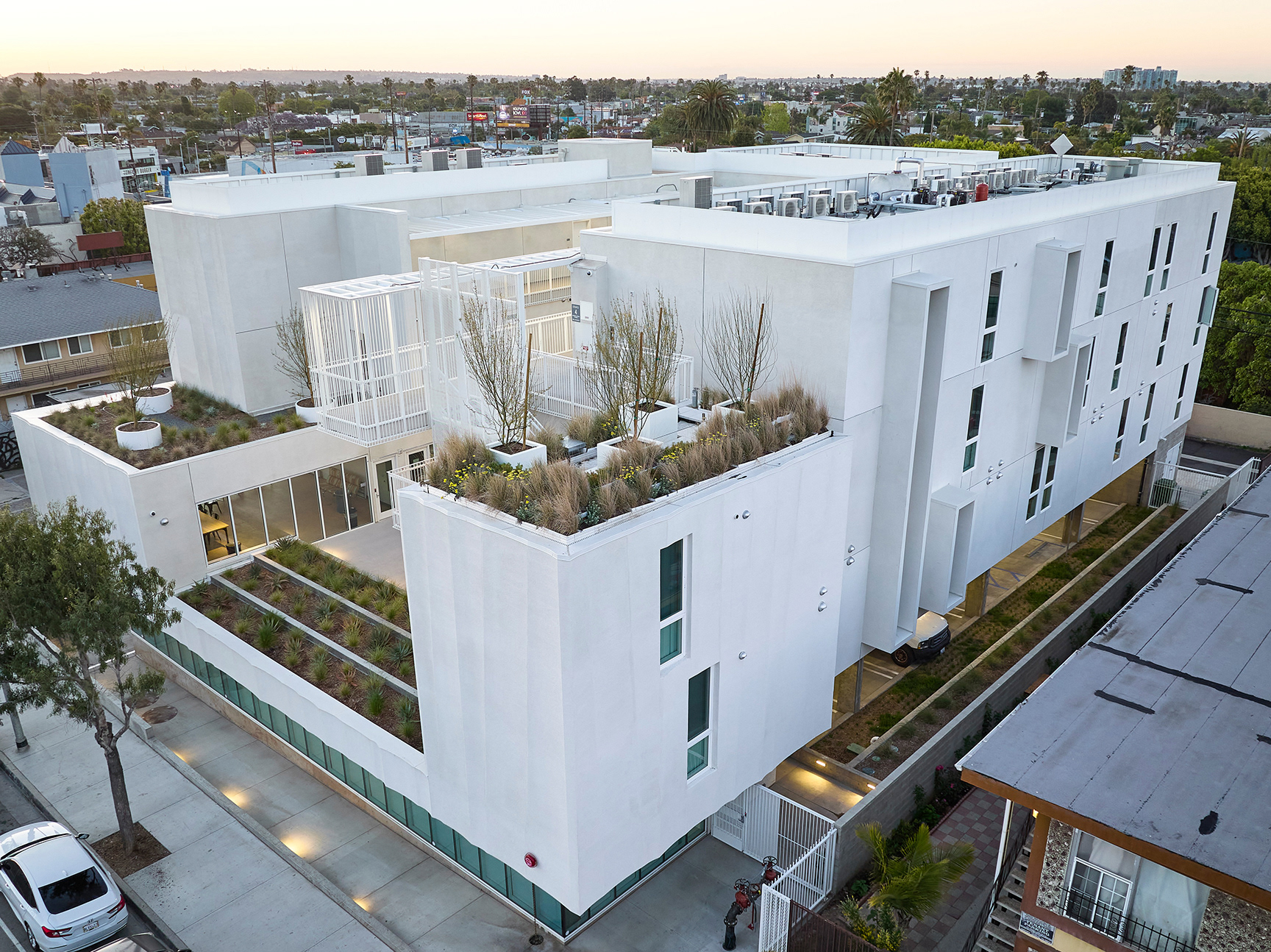
What about their other projects?
Brooks + Scarpa have garnered many plaudits for their innovative and boundary pushing work; their portfolio includes many housing complexes, at affordable, market rate and mixed-income levels. They recently took over the design of Venice Dell, a long embattled development for a parking lot on the Venice Boulevard median, also by Venice Community Housing, that just moved a step nearer realization after receiving approval from the mighty Coastal Commission.
Meanwhile, not far from Rose Apartments, you can check out another notable 100% affordable housing complex for families: Brunson Terrace on Pico Boulevard at 19th, for the nonprofit developer Community Corporation of Santa Monica. This building, containing 48 one, two, and three-bedroom apartments over retail and basement parking, is embedded in the Pico neighborhood of Santa Monica that was home to a thriving Black community until it was upended by the construction of the freeway and downtown Civic Center. The building is named after Vernon and Donald Brunson, African American brothersborn in Santa Monica in the early 1900s. Vernon Brunson became an architect.
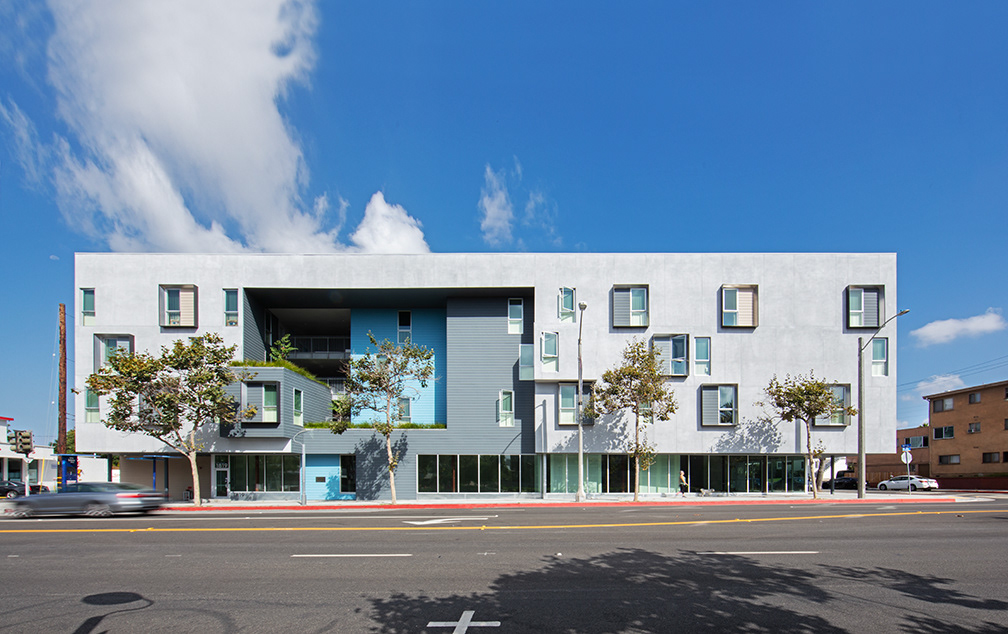
The design has the punch and cubist feel that is trademark Brooks + Scarpa; instead of a solid wall facing the street, they created a carved-out volume, with receding planes and layered colors and views in and out for visual connection and interest. But perhaps the awesomest element of this development is the way in which the ground level retail – often mandated by municipalities but sadly unused – has been transformed into Pico Roots, a marketplace for the building’s tenants and local community members to sell artisanal clothing, ceramics, jewelry and more. It is another dimension of the “community” building that Community Corp believes is core to its mission, and goes beyond providing shelter.
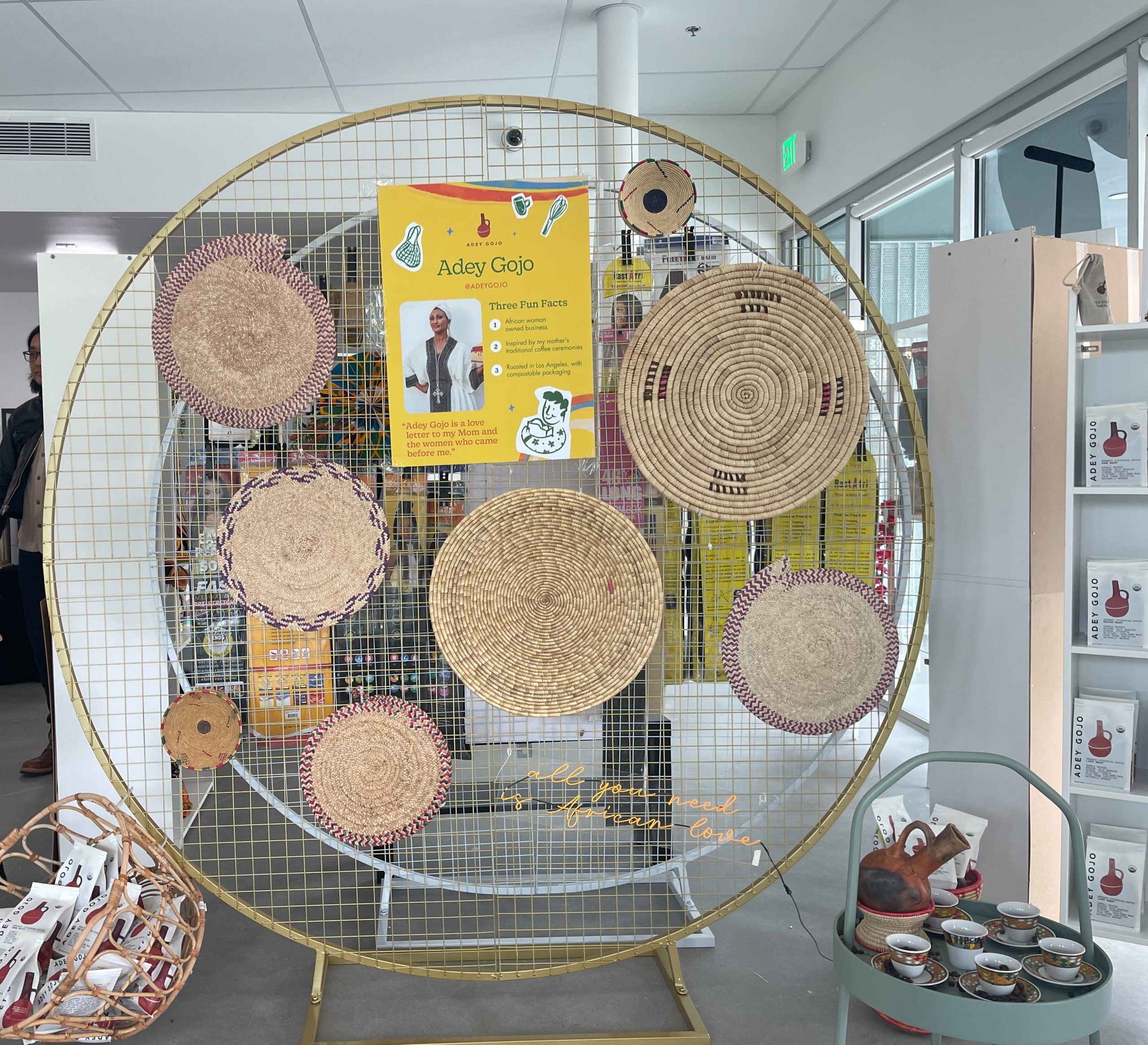
Call To Action
Read more about Brooks + Scarpa here, and more about Venice Community Housing, here, and Community Corporation of Santa Monica, here. Read about Venice Dell, here, and read about the affordable and mixed-income housing being built on Lincoln Boulevard in Of The Moment.